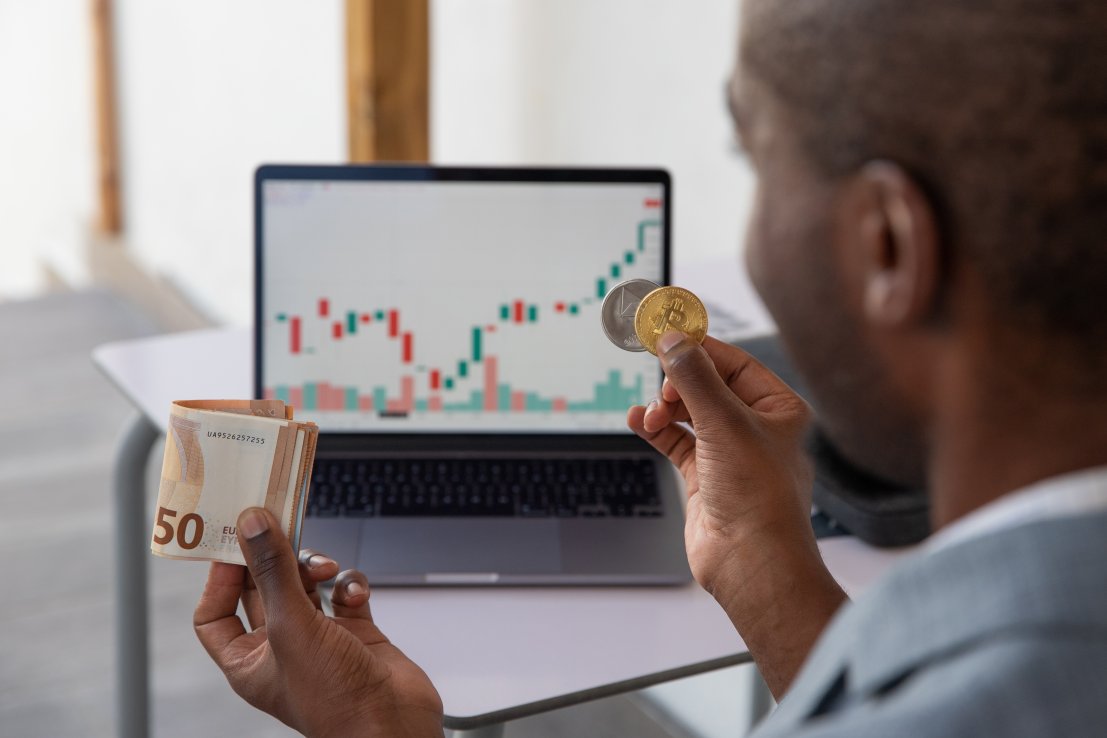How to Best Liquidate Crypto for Your Business

Crypto liquidation refers to the forced closing of a trader's position when they fail to maintain sufficient funds to meet the required margin. This can be a serious risk for businesses engaged in crypto trading, especially when involved in margin trading. Understanding how liquidation occurs is essential for managing risk and preventing significant losses.
The process typically happens when a trader's leveraged position is affected by market volatility or market price fluctuations, leading to a margin call. Without enough funds, the position is liquidated to offset the loss. This event can significantly impact trading positions and invested capital, especially when high leverage is involved in crypto trading.
The Basics of Margin Trading and Its Role in Crypto Liquidation
In margin trading, traders borrow funds from a crypto exchange to increase the size of their positions. The borrowed funds allow them to make larger trades with their initial capital, thereby increasing potential gains. However, this also increases the risk of liquidation. To open a leveraged trade, the trader must maintain a certain initial margin, which serves as collateral for the borrowed funds.
If the market price reaches a particular liquidation price, the exchange will automatically close the position to protect both the trader and the exchange from further financial losses. The risk of liquidation is higher in volatile markets when price movements can trigger liquidation quickly, especially in the case of crypto derivatives like perpetual swaps or futures contracts. If the trader's entire trading stake is at risk, liquidation may occur to prevent a total loss.
Understanding Crypto Liquidation and Its Triggers
Crypto liquidation occurs when a trader’s position falls below the required margin balance, and the exchange is forced to close the position to cover the loss. This can happen when market volatility drives the market price of the crypto asset below the liquidation price, which is calculated based on the trader's initial margin and the size of their leveraged trade open.
Margin calls are issued when the trader's margin balance is insufficient, signalling the need for additional funds to avoid forced liquidation. If the trader does not provide sufficient funds, the exchange will liquidate the position, resulting in a partial or total loss of the trader’s entire trading stake.

The Role of Market Price in Crypto Liquidation
The market price of an asset plays a crucial role in determining its liquidation price. When the market price falls below the required margin, liquidation occurs automatically. In cryptocurrency trading, liquidation happens when funds are insufficient to maintain leveraged positions, often due to significant price fluctuations. Traders borrow money to increase potential gains, but a sudden market drop can trigger a margin call, leading to forced liquidation. This can result in the loss of part or even entire invested capital if the market continues to decline. Additionally, if the market price of a particular asset moves unfavourably, traders may face further losses, impacting their entire invested capital.
Risk Management Strategies to Avoid Crypto Liquidation
To reduce the risk of liquidation in crypto, traders should implement effective risk management strategies. Setting stop-loss orders can limit potential losses when market prices move unfavourably, protecting against losing trades. Traders should avoid excessive leverage, as it can amplify price fluctuations. By closely monitoring market conditions and using smaller leverage ratios, they can maintain a sufficient balance to avoid margin calls. At Suisse Bank, we provide crypto payments to help businesses safeguard their entire invested capital, and optimize opportunities through secure platforms and financing options.

The Crypto Liquidation Process: Step-by-Step
Understanding the crypto liquidation process is vital for traders to manage risks and minimize losses. It involves several stages that determine when a trader's position will be closed. Key concepts include the liquidation price, margin requirements, and the two types of liquidation: partial and total.
Step 1: Margin Call
The process begins when a trader’s position experiences a significant loss. When the trader's margin balance falls below the required level due to adverse market price movements, the exchange will issue a margin call. This is a notification requesting the trader to add more funds to their trading account to meet the initial margin requirement. If the trader has insufficient funds to deposit, the situation moves into the next phase of the liquidation process.
Step 2: Insufficient Funds and Liquidation Trigger
If the trader fails to add sufficient funds to their account after receiving the margin call, liquidation occurs. In this case, the trader is unable to meet the margin requirements, and the exchange steps in to close the position. At this point, the trader's leveraged position becomes vulnerable to forced liquidation. The market price reaches a particular price point, triggering the liquidation process. The exchange relative to the trading position will automatically close the position, and the trader will begin to experience losses.
Step 3: Partial or Total Liquidation
There are two types of liquidation that traders may encounter: partial liquidation and total liquidation.
- Partial Liquidation: This occurs when the exchange closes part of a trader’s position to offset losses while allowing them to retain some of their investment. It typically happens in highly leveraged situations where only enough funds for partial closure are available. While it reduces the risk of further losses, it still decreases the trader's overall stake.
- Total Liquidation: This involves the closure of the entire position. If market conditions are volatile and the price moves significantly against the trader, the exchange may fully liquidate the position, resulting in the loss of the entire capital or a substantial portion of it, depending on leverage levels.
Step 4: Forced Liquidation
The most common type of liquidation is forced liquidation. In this scenario, the exchange automatically closes the position to prevent the trader from accumulating negative balances or incurring additional losses. Forced liquidation occurs when the trader's margin balance is insufficient to support their leveraged position. The exchange will close the position to offset losses and ensure the trader’s account doesn’t go into debt.
When a position is forcibly liquidated, the exchange uses the available funds in the trader’s account to cover the losses. If these funds are insufficient, the trader’s account may face a negative balance. This situation is particularly prevalent in derivatives trading when using financial instruments like crypto derivatives and perpetual swaps.
Step 5: Liquidation Price and Closing the Position
As liquidation approaches, the position will close once the market price reaches the liquidation price. This is the predetermined price point at which the trader’s position is no longer sustainable. The liquidation price is determined by the trader’s initial margin and the amount of leverage used.
At this particular price point, the trader’s entire trading balance is at risk. Once the price hits this level, the exchange steps in to liquidate the position to prevent further financial damage. In some cases, the trader might be required to convert assets in their account to cover the losses.
Step 6: Losses and Risk Management
After liquidation, the trader will either face a partial or total loss depending on the size of the position and how much leverage was used. If the position is liquidated due to the market price reaching the liquidation price, the trader will lose either part or all of their capital. The key takeaway for traders is the importance of risk management strategies to avoid reaching the liquidation point.
Traders can mitigate this risk by using trading strategies like setting stop-loss orders, avoiding excessive leverage, and managing margin requirements effectively. Regular monitoring of the market liquidity and market volatility also helps to ensure that the trader’s position remains within manageable risk levels.
Leveraged Trades and Their Impact on Crypto Liquidation
Leveraged trading involves borrowing funds from a crypto exchange to open larger positions than a trader can afford with their initial capital. While this can increase potential gains, it also raises the risk of liquidation. If the market moves against a trader and they fail to meet a margin call, their position may be liquidated. High market volatility can quickly affect the liquidation price, so maintaining an adequate margin balance and staying informed about market events is essential for managing risk and avoiding significant losses.
Crypto Liquidation Events and Their Impact on the Market
Crypto liquidation events heavily impact the cryptocurrency market. Large position liquidations can cause significant price fluctuations and further sell-offs, especially in low-liquidity markets. Traders must be prepared for these events, as they can greatly affect asset values. Businesses in the crypto exchange space should prioritize robust risk management strategies to mitigate exposure to such occurrences.

How to Safeguard Your Business from Crypto Liquidation
To protect your business from crypto liquidation, implement sound trading strategies that mitigate the risks associated with leveraged positions. First, always ensure that your margin balance is sufficient to cover potential losses. Set realistic stop-loss orders to minimize losses during volatile markets.
Avoid borrowing money in excess and use appropriate leverage to prevent your trading positions from being at risk of forced liquidation. Additionally, monitor market price fluctuations closely, especially during periods of increased volatility. A well-diversified portfolio across multiple crypto assets can also help offset the risk of a liquidation price being triggered for any single asset.
FAQs
Q: What happens when crypto liquidation occurs?
Crypto liquidation happens when a trader’s position is closed by the exchange due to insufficient funds in the trader’s account. This is often triggered when the market price moves unfavourably, pushing the position below the liquidation price.
Q: Can I avoid liquidation with proper risk management?
Yes, by using stop-loss orders, maintaining a sufficient margin balance, avoiding excessive leverage, and staying alert to market price movements, traders can reduce the risk of liquidation and protect their positions from forced liquidation.
Q: How does market volatility affect liquidation?
In volatile markets, market price movements are more likely to trigger a margin call and liquidation. Extreme price swings can quickly move the position below the liquidation price, resulting in significant losses for the trader.
Safeguarding Your Trading Position in the Crypto Market
Understanding crypto liquidation is essential for managing risk in cryptocurrency trading. Whether you're involved in margin or derivatives trading, it's important to have enough funds to meet margin requirements and avoid forced liquidation. Effective risk management strategies, like setting stop-loss orders and using appropriate leverage, can help minimize liquidation risks and protect your investment. Staying updated on market conditions is also crucial in the volatile crypto landscape.
At Suisse Bank, we help you in cryptocurrency management with our All-in-One Wallet. Our tool allows you to manage crypto liquidation effectively.
Become our client today. With our expertise, you can confidently liquidate crypto, protect your investments, and make informed decisions to align with your financial goals.

